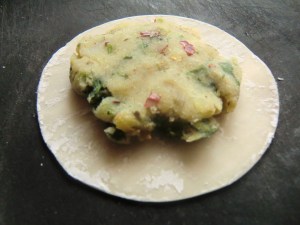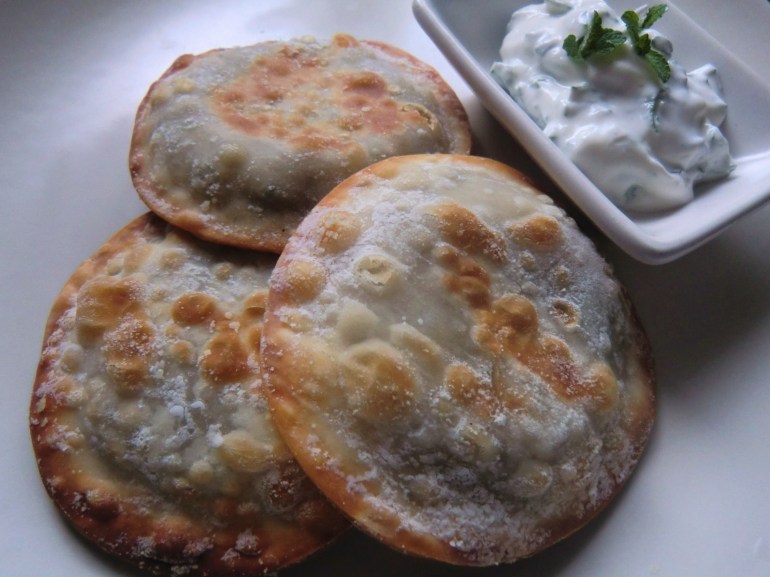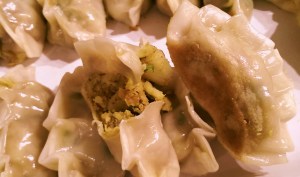
Postickers
During my childhood, my parents were keen to ensure my siblings and I retained our culture, mother tongue and heritage. As second generation migrants living in the UK there was always a need to balance my two identities; though not without the occasional volcanic eruption!
I attended a Sunday supplementary school to learn to read and write Chinese. This took place from 1-3pm each week and was attended by hundreds of children just like me, my sister and my cousins. A regular ritual for my family was to go to China Town and at 12pm for a dim sum lunch before we then rushed over to school. In Hong Kong, dim sum is traditionally served throughout the day.From early in the morning for breakfast right through to late afternoon for late lunches. ‘Dim Sum’ (點心) translated means ‘Touch of the Heart’. If you’ve read my ‘About’ page, you’ll know that my name is Sam (心) so you’ll see that I have a natural affinity to this delicious cuisine!

Prawn Potstickers
Dim Sum is sometimes described as ‘Chinese Tapas’. You get lots of small dishes served in the middle of the table for all to share. The great things about Dim Sum is that the more people you have around the table, the more variety you can order. It’s a great way to have a lazy lunch with your friends, ordering as you go, washed down with plenty of jasmine tea.
Pot-sticker, Gyoza, Mantu, Dumplings etc. come in many guises. It’s an amazing food that many cultures and countries have their own versions of. Basically a disk of dough stuffed with some form of meat or vegetable filling, then folded and sealed. They can be steamed, boiled, pan-fried or deep fried. The possibilities are endless!
I regularly use shop bought dumpling pastry when I’m making them at home. They are fairly cheap and very convenient! In the early days of our relationship my partner wanted to show off the dishes from his home country (Afghanistan) and taught me how to make ‘Mantu’ and ‘Aushak’. Aushak are basically a dumpling filled with cooked leeks/scallions/spring onions, and boiled or steamed. Mantu are a meat version made with ground or minced lamb/beef. They are then served with a meaty or lentil based sauce. It seems that these Afghan dumplings were brought to the country by Mongolian horsemen when they were invading the country. Afghans have adapted the dumplings and added spices and stronger flavours to suit the Central Asian palate. A very different way of serving dumplings to the basic Chinese pot-stickers that are served plain with a light dipping sauce.

Afghan Mantu
Dumpling making is time consuming but worth the effort. So today I have made a big batch. I’ve decided to try and make my own dumpling dough and turned to Christine again for her wise advice: Home made dumpling wrappers.
From one lot of dumpling dough I made three varieties: Prawn and shitake mushroom pot-stickers, Aushak, and Banana gyoza. This was mainly to test out the dough to see what kind of cooking methods it will stand up to.
The pot-stickers were fantastic! For the filling, I processed raw prawns/shrimp with rehydrated shitake mushrooms and added sesame oil, salt and pepper to taste. I also added some cornflour to help soak up some of the juice during the cooking process.
For the Aushak I made the filling, wrapped them, then stuck them in the freezer on a baking sheet for another time.
The banana gyoza were stuffed with mashed banana then deep fried. The pastry didn’t like the wet banana much as a couple of them burst during cooking. However, served with a coconut caramel recipe that I found, they were to die for! For one gyoza I also added a spoonful of Nutella (yum!) but found the overall taste to be too sweet and sickly. I think next time I’m going to add a little sea salt to the caramel to balance out the flavours a little.

Banana Gyoza
In the mean time there are plenty more fillings to try out! And more chance to improve my poor dumpling wrapping skills…
Related articles
















